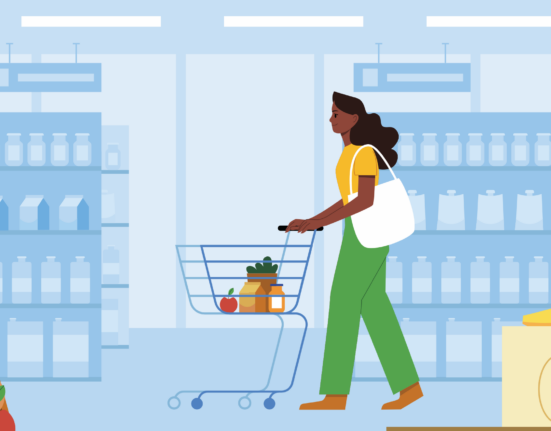Ángel Manero was on April 1 appointed agriculture minister of Peru, a produce export powerhouse whose importance in global markets has skyrocketed over the past decade, especially in table grapes, blueberries and avocados.
Manero initially enrolled at the National University of Engineering to study systems engineering, a field his family highly regarded. However, his true passion was agriculture. Secretly, he transferred to San Ignacio de Loyola University to pursue agro-industrial engineering on a scholarship.
Born in San Vicente de Cañete, Manero’s early life was deeply rooted in farming, with his father working on a large estate. Despite his natural inclination towards agriculture, his father initially opposed this career path due to the sector’s instability, preferring the more stable transportation business he built after losing his job during Peru’s Agrarian Reform, a process of land reform redistribution initiated in the 1960s.
Manero’s diverse career spans roles in both private and public sectors, and he has held significant positions under various Peruvian presidents. In the following interview, he discusses the current state of the country’s produce industry, the government’s strategy to support a sector that is facing myriad challenges, and the recently announced largest highland irrigation project in Peru’s history.
This interview has been edited for brevity and clarity.
How would you describe the current state of Peru’s agricultural industry on the world stage? Will it continue to be the biggest exporter of blueberries and table grapes, and second biggest of avocados?
There is a growth crisis among both small and large producers. Previously, you could only find certain fruits and vegetables in the United States or Europe during specific months, but now they are available year-round from various origins. In Latin America, we have Chile, Peru, Colombia and Mexico; in Africa, it’s not just South Africa anymore; Israel and Spain are also competing with us. The competition is much greater now. Peru has been growing at rates of 20-30% in many products; we all knew we would reach a peak, a maturation point. Now, we must grow in line with the global economy, around 3% annually. However, supply is still growing at 15%, which is why we have pricing issues. Prices for blueberries, avocados, citrus and asparagus have all dropped—we continue to grow in quantity, but profitability has significantly decreased.
Investments in plantations continued even until 2022, which will allow us to keep growing in quantity until at least 2027. Due to overproduction, the years leading up to 2027 will be tough. But overproduction has its upside—cheaper products will increase market consumption capacity. People who found the fruit too expensive or bought little will now buy more, boosting consumption habits and helping prices to slowly recover. I estimate that prices will remain low until 2026 but start recovering from 2027 onwards. We can expect years of prosperity from 2027.
How do you think Peru will fare amid the trend of consolidation in the global produce industry?
Those with the deepest pockets or significant access to capital markets will prevail. Most large agro-export companies will end up being bought out. This future is inevitable, because, eventually, the offers will be too good to refuse.
Chilean businessmen linked to the agricultural industry have said that, unlike Chile, in Peru, politics and the sector’s development operate on separate tracks. Do you agree?
They did operate separately. In 2020, a crucial shift occurred in Peru when the promotional framework for agricultural exports [which had provided benefits like tax incentives for agricultural companies] was removed. Also, the sector was stigmatized as bad; most citizens in Peru hold a negative view of the produce export sector. Following the 2020 protests [that led to the law being repealed], a climate of pessimism emerged in the Peruvian produce industry. The unions make very ambitious demands, in many cases, to the government, which often supervises companies in the sector too frequently and for minor issues, instead of focusing on stopping the spread of unregulated work in the industry. Thus, politics has not fulfilled its role in encouraging new investments; this is our challenge.
What is the strategy to address this challenge?
More damaging than removing the tax benefit for agro-exports was imposing a 30% labor surcharge—what is called the Bono Beta—a completely impractical bonus that none of our main competitor countries have. This bonus cannot be eliminated now, as workers see it as a gained benefit, and removing it would cause social unrest. Therefore, we must find ways to compensate for this surcharge, and unfortunately, one of the few mechanisms left is to reinstate the tax benefit. Ideally, there would be neither a tax benefit nor Bono Beta, but we cannot reduce companies’ competitiveness.
In Peru, there often seems to be a lack of understanding among politicians about the agricultural industry, and many argue that the sector no longer needs subsidies or special treatment. What are your views on this?
There is no lack of understanding; they know the sector well. But attacking certain economic sectors can work well politically for them. No matter how much you refute their theories, you’ll never convince them because it’s part of their ideology and political business, and some media outlets also follow this line.
Why is the agro-export business different? What would you say, in summary, to dissenting voices?
This is a high-risk, medium-profit business. Typically, high risk correlates with high profitability, but that’s not the case in agriculture. Discussing agricultural threats involves climatic, social, political, regulatory, market and capital risks. For example, with El Niño, the cost of working capital was restricted, and overall costs in the sector skyrocketed.
Benjamín Cilloniz, manager of the Peruvian produce company Safco, said in an interview that, “It’s very difficult to promote an industry that half of Peru detests.” What do you think about that?
I think more than half of Peru, around 70-80%, feel this way.
Are agricultural business people often viewed as feudal lords who are served by their workers?
This perception stems from historical abuses in Peruvian highland estates, not the coastal haciendas, which were often spectacular. My grandfather started as a guard on a hacienda and eventually became an administrator, which was incredible. However, the highland estates were terrible, committing all possible abuses, and this image is still sociologically linked to current produce export company owners or managers. A similar situation exists with mining; fifty years ago, it was destructive, but modern mining is very different, yet it remains linked to the past. This is because the political class hasn’t done its job in defending what truly helps the country and educating people on the importance of investment.
I witnessed agro-export growth in Cañete [a southern coastal province] during the 90s when there was no work; hundreds waited daily for job opportunities. The arrival of asparagus exports changed everything, offering uniforms, benefits and transportation for workers. This is the way in which much of the coastal produce export sector developed. It’s unfortunate that we’ve lost many jobs, and poverty has increased in agricultural export regions like Arequipa, Ica, Lima, Ancash, La Libertad and Lambayeque. As agriculture minister, my strong message is to restore the promotional framework for agro-exports, understanding that we can’t remove labor benefits and must compensate workers somehow.
Is this government doing enough to support the agricultural industry? Do businesses often fill in for the state in their communities?
Firstly, we should note that families in these communities are much better off than twenty years ago before the development of the produce exports. They now have incomes that allow for basic needs, education and food. It’s true that there are other challenges in providing basic services, and the state has indeed fallen short in many areas.
Over the years, many migrants from all over Peru have moved to the coast to work in the produce industry, causing some communities to grow significantly without basic services. What will this government do about it?
This is a big challenge. The first step is formalizing land ownership, then providing water and sewage services. The scale of this challenge is vast for the state; providing infrastructure is costly. However, we cannot remain idle. The problem is the lack of scheduled projects and timelines for providing basic services. We’ve proposed a housing project in Barrio Chino [in Ica] to the Minister of Housing. The idea is to facilitate access to housing subsidies and involve produce export companies in donating land, ensuring the project’s sustainability through private and state collaboration.
In May 2024 you announced the largest irrigation plan in history: 120,000 hectares in the highlands. Can you tell me more about that?
It’s the largest highland irrigation plan in Peru’s history, as the largest overall is Chavimochic [in the north], with about 170,000 hectares (420,000 acres) across its three stages. The highlands don’t have space for large irrigation projects like those on the coast. To show our commitment to the highlands, we are reactivating 120,000 hectares (297,000 acres) of Incan and pre-Incan agricultural terraces, which historically supported 12 million people.
This is a political and social response to critics who say we do nothing significant for the highlands. I think the coast should focus on produce exports and industrial crops, while the highlands should focus on feeding Peru. Large-scale fruit farming isn’t feasible in the highlands. Diversifying in both regions is crucial; controlling potato overproduction by reducing cultivation to 40,000 hectares and increasing Andean grains would be significant. Similarly, developing industrial crops like cotton on the coast would improve overall market dynamics. The problem is the current lack of diversification options, which we need to develop.
When this government ends, who do you think will appreciate your work more, business people from the produce export sector or smallholder farmers?
I think small farmers will appreciate it more. Attention to produce exports revolves mainly around legislation, and promoting such laws takes time. We might appear in the media defending these laws, leading some to label me as the produce exporters’ minister, but that’s not true. Addressing small-scale agriculture doesn’t have a magical formula; it requires multiple approaches, mainly focusing on diversification and new crops.





